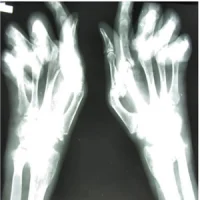A new study published in the Endocrine Society's Journal of Clinical Endocrinology & Metabolism suggests that pesticide exposure, not obesity alone, can contribute to increased cardiovascular disease risk and inflammation in premenopausal women.
The use of polychlorinated pesticides such as DDT remains widespread in the environment and food supply. The Endocrine Society and IPED guidelines have already identified DDT and related pesticides as environmental oestrogens that can mimic and interfere with the function of the hormone oestrogen. DDT exposure has been found to be linked to birth defects, reduced fertility and increased risk of Type 2 diabetes.
Diana Teixeira, PhD student of the Faculty of Medicine, University of Porto in Porto, Portugal, one of the study's authors explains that high levels of environmental oestrogens in the fat tissue can compromise the protective effect of the body's natural oestrogen leaving premenopausal women at an increased risk of cardiovascular disease and inflammation.
The study investigated the effects of exposure to such pesticides and analysed the amount of endocrine-disrupting chemicals in fat tissue and blood samples from 121 obese women who underwent bariatric surgery at S. João Hospital in Porto. 73 participants were classified as premenopausal while 48 were postmenopausal. The research team tested the participants' fasting blood glucose and cholesterol. The women's 10-year risk of developing cardiovascular disease was then assessed using the Framingham risk score.
The findings show that premenopausal women with higher concentrations of environmental oestrogens in their visceral fat tissue from the belly were more likely to have higher average blood sugar levels while premenopausal women with higher levels of environmental oestrogens in their blood were more likely to have inflammation and greater risk of cardiovascular disease.
“Our findings show that endocrine-disrupting chemicals tend to aggravate complications of obesity, including inflammation and cardiovascular disease risk, in premenopausal women,” Teixeira said. “Measuring environmental oestrogen levels may help physicians identify women who are at risk of developing cardiovascular and metabolic disease so they can take preventative action.”
Source: Endocrine Society
Image Credit: Wikimedia Commons
References:
Teixeira, Diana et. al. 2015. Inflammatory and Cardiometabolic Risk on Obesity: Role of Environmental Xenoestrogens, The Journal of Clinical Endocrinology & Metabolism.










